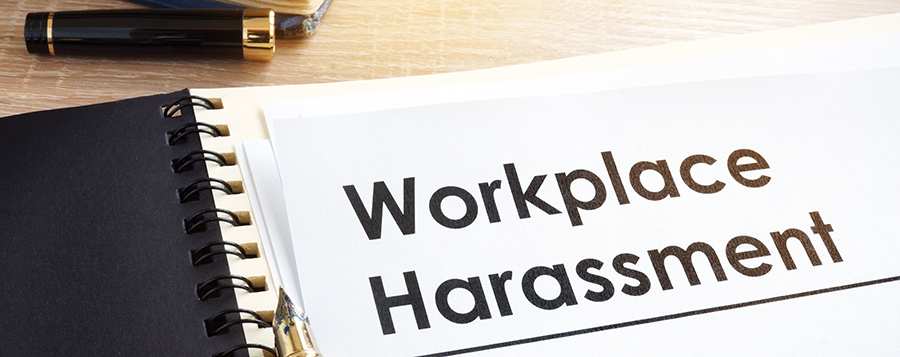The five year (and beyond) journey to inclusive and psychologically safe workplaces in Australia
In the last five years there has been significant legislative and action-based movement in Australia to better protect workers from psychological harm, sexual harassment and discrimination in the workplace.
Some of these updates have been mentioned in previous articles – the proposed amendments to Australia’s anti-discrimination laws in relation to sexual harassment in the workplace, and the amendments to the model work health and safety (WHS) Regulations in relation to psychosocial hazards. However, these articles were published in 2021 and 2023 respectively, and since then greater protections and improvements to employee equality and mental wellbeing have been implemented, with more initiatives on the horizon.
This article will fill you in on the most significant updates across Australia’s legislative landscape in relation to managing psychosocial hazards, sexual harassment and discrimination in the workplace, as well as explore the latest workplace sexual harassment research from the Australian Human Rights Commission and the important action still needed to be taken.
Updates on psychosocial, sexual harassment and discrimination worker protections at a federal level
Psychosocial hazards
In 2022, the model WHS regulations were amended in response to the Boland Review, adding greater clarification to the definition and legal obligations relating to psychosocial hazards and risks in the workplace. At around the same time, New South Wales, Queensland, Tasmania and Western Australia followed suit amending their WHS regulations in a similar fashion, and as you will see below, by the end of this year all remaining jurisdictions will have done the same.
Sexual harassment and discrimination
Psychological hazards include harassment (sexual or gender-based), bullying, workplace violence and aggression, and conflict or poor workplace relationships and interactions. These harmful workplace behaviours were highlighted in the Australian Human Rights Commission’s Respect@Work Report and they were drivers for recent changes to federal and state anti-discrimination and industrial relation laws.
The first wave of changes, recommended in the Report and highlighted in our previous article, affected the Sex Discrimination Act 1986 and Australian Human Rights Commission Act 1984. The second wave of changes included further amendments to these Acts and included among other things, the introduction of a positive duty requiring duty holders to prevent unlawful conduct, the illegality of a person being subjected to a hostile work environment based on their sex, and lowering the test for a sex-based harassment finding. As you will see below, versions of these changes have also permeated into some state-based laws.
The final legislative amendment to come from state-based recommendations was the Australian Human Rights Commission Amendment (Costs Protection) Bill 2023 which commenced in October last year. New provisions to the Australian Human Rights Commission Act 1984 were introduced that prevents a court from ordering an applicant to pay cost’s incurred by the respondents (exceptions apply) and requires the respondent to pay the applicant’s costs if the applicant is successful on one or more grounds. This removes a financial barrier that may hinder affected employees from asserting their rights.

Updates from a jurisdictional level
| Australian Capital Territory |
|
| New South Wales | This year saw significant reform and investment into workplace health and safety, including but not limited to:
|
| Northern Territory |
|
| Queensland |
|
| South Australia |
|
| Victoria |
|
| Western Australia |
|

Lived experience the next course of action
While these legislative instruments set an expectation on the conduct required by organisations to protect their workers, the Australian Human Rights Commission still urges that more work needs to be done, specifically in relation to sexual harassment in the workplace. This belief stems from a ground-breaking project led by the Australian Human Rights Commission where over 300 people from vulnerable or marginalised groups (i.e. the LGBTIQA+ community, workers with disabilities, First Nation workers etc) with lived workplace sexual harassment experience shared their stories and perspectives on the need for change. The findings and additional recommendations were presented in a report titled Speaking from Experience launched in June this year.
Through listening to these lived experiences, it was evident there were still gaps within current WHS policies and legislation for addressing workplace sexual harassment for these victim-survivors and that shaping more effective future policies and frameworks requires their contribution and expertise.
Below is a summary of the reasons vulnerable or marginalised individuals experience workplace sexual harassment and the barriers to them speaking out, followed by recommendations offered in the Report.
Why vulnerable or marginalised individuals experience workplace sexual harassment
Intersectionality – Workplace sexual harassment often occurs when there are other forms of discrimination or disadvantage (i.e sexual orientation, gender, ethnicity, disability etc). These workers are vulnerable and with a heavy reliance on their employment making them feel like easy targets for harassers.
Gender and power imbalance – Those in senior positions or with greater access to support and resources, were seen as safer in their workplaces and able to commit sexual harassment without consequence. There was a shared sentiment that the power imbalance between harasser and victim made reporting sexual harassment pointless; the harasser would evade punishment because the victim was not believed, or their experience was misunderstood.
Social and economic stakes – Vulnerable or marginalised individuals feel the significance of what is at stake in their lives outweighs reporting their sexual harassment. Being on the inferior side of the power dynamic, victim-survivors risked losing their job by reporting their harassment. This in turn has greater implications on their finances, housing, family support, Australian residency, and even their community relationship.

The barriers hindering vulnerable or marginalised individuals from speaking out
Lack of job security – Young workers, student workers and migrant workers on casual, short-term, insecure contracts or temporary visas are hindered by their reliance on employment, money and visa-status to report sexual harassment.
Lack of information – For many vulnerable or marginalised groups their inability to access support and help is due to:
- A misunderstanding about what sexual harassment looks like,
- Being unaware of support options outside their workplace,
- A lack of resources available in languages other than English,
- Not being able to understand legalese.
Lack of respect – For some who spoke out about their sexual harassment, their experience was marred by insensitivity and judgement. Victim-survivors expressed a lack of awareness from employers on certain areas such as sexual orientation, a lack of understanding on the intersecting nature of workplace sexual harassment and a lack of concern to their safety and wellbeing post their complaint.
Lack of proper response – In some circumstances, victim-survivors who reported their sexual harassment felt worse off. Some felt the process harmed their employment and made them feel less safe in the workplace, others had their harasser believed over them, and others didn’t receive adequate intervention from management allowing the harmful behaviour to be accepted in the workplace.

The actions required to address the gaps
Based on the discussions with victim-survivors and key stakeholders, these are the recommendations offered by the Australian Human Rights Commission to address the barriers to information, safety, acknowledgment, support and justice:
-
- Fund specialist organisations such as multicultural services, disability services, youth centres etc to provide accessible and culturally appropriate information on workplace sexual harassment
- Deliver a national media campaign raising awareness and promoting prevention of workplace sexual harassment to drive behavioural and cultural change.
- Resource the Australian Human Rights Commission to undertake the sixth National Survey on Sexual Harassment in Australian Workplaces in 2026.
- Amend the Workplace Gender Equality Act 2012 to include requirements for the collection of data on experiences from diverse and marginalised work groups.
- Improve the safety and wellbeing of children and young workers by reviewing legislation, policy and awards for children and young people, and including workplace sexual harassment education in high schools.
- Remove barriers for migrant workers seeking help such as providing easier access to legal services, unions and specialist organisations.
- Review the effectiveness and progress of recommendations from the Respect@Work Report.
- Increase transparency and protect workers’ rights by amending the Sex Discrimination Act and other relevant industrial laws to limit the use of non-disclosure agreements in cases of workplace sexual harassment, and resource the Australian Rights Commissions to update the Respect@Work guidelines.
- Improve national guidance to assist employers in handling workplace sexual harassment complaints in a more supportive fashion.
- Expand justice programs and develop guidelines to include trauma, violence and culturally informed responses to workplace sexual harassment.
- Strengthen employer accountability in workplace sexual harassment prevention by enabling information sharing between regulators and introducing civil penalties for breaches of the positive duty under the Sex Discrimination Act.
Staying on top of the actions
The Australian Government will need to respond to these recommendations before any legislative updates and actions take place. At the time of publishing this article, there had been no further developments. You will be informed through our SafetyLaw Updates and HSE Bulletin as developments occur.

Using these lived experiences to improve your workplace culture
In the Report, those with lived experience of workplace sexual harassment also shared what they felt was helpful or could have been helpful when dealing with their trauma. These suggestions could inform how you strengthen your workplace culture to be more inclusive and supportive particularly for vulnerable, marginalised and diverse workers.
Make workplace safety an expectation – Workplaces should be vocal about their standards and expectations towards harmful and unsafe behaviour such as workplace sexual harassment, and a worker’s safety should never be trumped by the demands of the job.
Embed inclusivity at the top – Reduce power imbalance and inequality with greater representation of diverse and marginalised workers in decision-making and leadership positions.
Prioritise the person – When a compliant is made, focus on the safety and wellbeing of the person making the complaint before going into the compliant process. Listen to their needs, ascertain if there are any other forms of discrimination being faced and provide them with information on their rights.
Provide clear and accessible information – Empower workers with policies and procedures that are easy to understand for all types of workers and provide training and resources that include specific examples of workplace sexual harassment and internal and external support options.
Offer adequate justice – Support victim-survivors by taking a firm stand on workplace sexual harassment and hold harassers accountable. Include the victim’s opinions when determining an outcome for the harasser as each case can have extenuating and difficult circumstances.
References
- ACT Human Rights Commission webpage: Recent Amendments to the Discrimination Act
- Australian Government Publication: Fact Sheet: Respect@Work – Changes to the Sex Discrimination Act 1984 and the Australian Human Rights Commission Act
- Australian Human Rights Commission media release: New Report Calls for Stronger Measures to Combat Sexual Harassment
- Australian Human Rights Commission media release: Sex Discrimination Commissioner Welcomes Final Recommendation Being Implemented from Respect@Work Report
- Australian Human Rights Commission publication: Speaking from Experience: What Needs to Change to Address Workplace Sexual Harassment
- Engage Victoria webpage: Restricting NDAs in Workplace Sexual Harassment Cases
- New South Wales Government media release: Minns Labor Government Introduces Flagship Legislation to Prevent Psychological and Physical Workplace Injuries
- New South Wales Government media release: NSW Government Adds Sexual Harassment and Violence to Responsible Service of Alcohol Training, Protecting Staff and Patrons
- New South Wales Government media release: Protecting Workers Compensation for Future Generations
- NTWorkSafe webpage: 2023 Psychosocial Regulations
- NTWorkSafe webpage: Positive Duty
- Queensland Government publication: Respect at Work and Other Matters Amendment Bill 2024 Explanatory Notes
- Queensland Government media statement: Crisafulli Government to Consult on Anti-Discrimination Laws
- Queensland Government media statement: Employers Put on Notice to Proactively Manage Sexual Harassment
- Resources Safety & Health Queensland webpage: Public Consultation
- SafeWork SA Webpage: New Regulations to Manage Risks of Psychological Harm
- Victorian Government media release: Leading the National on Workplace Mental Health
- Victorian Government publication: Occupational Health and Safety Amendment (Psychological Health) Regulations Exposure Draft
- Western Australian Government webpage: Sexual Harassment in Connection with Work
- WorkSafe ACT webpage: New Managing Psychosocial Risks at Work Code of Practice
- WorkSafe QLD webpage: New Workplace Sexual Harassment Regulations in September